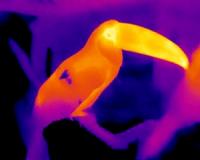| . |  |
. |
Kuala Lumpur (AFP) June 28, 2010 Wildlife officials in Malaysian Borneo are pushing to have its saltwater crocodiles removed from a list of endangered animals, saying the reptile's numbers have strongly recovered in recent years. Deputy director of the Sabah Wildlife Department Augustin Tuuga told AFP that a survey of the Crocodylus porosus population showed there were about 11,000 to 15,000 in the state compared to 1,000 to 5,000 two decades ago. "We are pushing to have the crocodile downgraded from the 'endangered' to the 'not necessarily threatened' list on the Convention of International Trade of Species (CITES)," he said. Tuuga said there was big demand for legal crocodile leather from handbag and clothing accessory manufacturers as well as for crocodile meat in kitchens throughout Asia. "Under CITES, these crocodiles can only come from breeding farms but once the crocodile is downgraded, manufacturers will be able to get the crocodiles from the wild," he added. "However, before this can happen we must have an effective monitoring mechanism to keep track of the crocodile population to ensure its numbers do not fall below acceptable levels." Saltwater crocodiles have the most commercially valuable skin of its species and are found from Sri Lanka all the way to the Caroline Islands in the Western Pacific. Tuuga said the increase in the crocodile population has also seen 38 attacks on humans in the last 10 years with 23 deaths and 15 injuries. The latest was reported this month when the remains of a man who was eaten while looking for shellfish were found in the south of the state, he said. However, Tuuga said the increasing population was not the only factor that led to the attacks. "A lot of the crocodile's habitat has been destroyed by development and much of its food sources have also been depleted so this and the frequent human use of the rivers mean that such attacks will occur," he added. With some growing up to seven metres (23 feet) in length, the saltwater crocodile has a large head with ridges that run from the eye along the centre of the snout, with bands on its lower flanks and a yellow underside.
Share This Article With Planet Earth
Related Links Darwin Today At TerraDaily.com
 Birds Reduce Their Heating Bills In Cold Climates
Birds Reduce Their Heating Bills In Cold ClimatesMelbourne, Australia (SPX) Jun 25, 2010 The evolution of bird bills is related to climate according to latest research by the University of Melbourne, Australia and Brock University, Canada. By examining bill sizes of a diverse range of bird species around the world, researchers have found that birds with larger bills tend to be found in hot environments, whilst birds in colder environments have evolved smaller bills. The ... read more |
|
| The content herein, unless otherwise known to be public domain, are Copyright 1995-2010 - SpaceDaily. AFP and UPI Wire Stories are copyright Agence France-Presse and United Press International. ESA Portal Reports are copyright European Space Agency. All NASA sourced material is public domain. Additional copyrights may apply in whole or part to other bona fide parties. Advertising does not imply endorsement,agreement or approval of any opinions, statements or information provided by SpaceDaily on any Web page published or hosted by SpaceDaily. Privacy Statement |